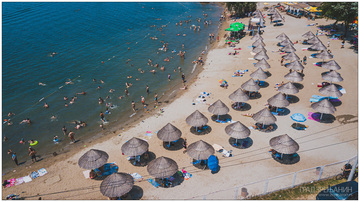Banat ethno

Nutrition
Banat cuisine is a typical mixture of various influences. What makes it significantly different from the typical Serbian cuisine is, first of all, the influence of the German and Hungarian cuisines. Those influences are featured in the combination of salty and sweet (for example, cooked meat and a sweet sauce, roast meat and sour-cherry salad), all types of leavened dough, and the evidence of this is that the varieties of German names of numerous dishes have been retained up to the present day – thus, on Sundays, we have rimflajš (cooked beef) for lunch, after lunch, poppyseed strudel, we also eat čušpajz (cooked vegetables) (let’s say of pumpkin), in winter time, it is not a rare occasion that you are served kitnikez (quince paste). Nutrition in Banat had to be adapted to the lifestyle, but also to the geographic characteristics of the region (climatic elements, marshland, etc.). These reasons have had impact on preparation of "heavy" food, or creation of gourmet cuisine.
The direct impact of other cuisines is mirrored in the introduction of new ways of food preparation, such as: coating, roasting, fruit boiling for compotes. The following types of dishes and their characteristic sub-categories are the best known as the gastronomic features of Banat:
- Starters ("švapski-cottage cheese", blood sausage, cracklings, bacon..)
- Soups (chicken, duck, goose, roux soup...)
- Pastries (doughboys, noodles...)
- Sauces (sour cherry, apple, horseradish, dill weed, tomato...)
- Cooked vegetables (pumpkin, carrot, potato...)
- Cakes and deserts (poppyseed, carob, sour-cherry strudels, jelly buns, pumpkin, sour-cherry, cheese, semoline pies, snow balls...)
- Compotes or steaming (plum, quince, quince paste...)
- Drinks (coffee with milk, wine, beer...)
 Skupstinagrada Zrenjanina
Skupstinagrada Zrenjanina